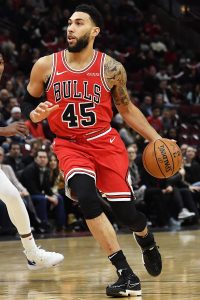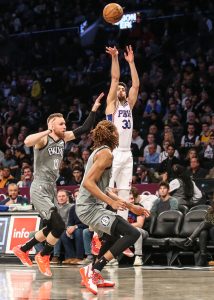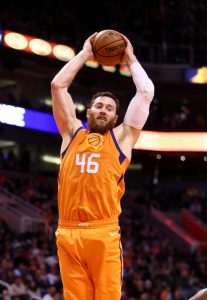The NBA announced last week that Giannis Antetokounmpo, Joel Embiid, Pascal Siakam, Kemba Walker, and Trae Young will be the five All-Star starters from the Eastern Conference this season, as selected by fans, players, and the media. That leaves seven reserve spots to fill — two more guards, three more frontcourt players, and a pair of wild cards.
Those seven Eastern All-Stars will be announced on Thursday, but before they are, we want to get your thoughts on which players deserve to be included and which players don’t quite make the cut.
Of the five starters, all but Young are from one of the Eastern Conference’s top six teams, and you could actually make a reasonable case that the seven reserves should all be from those clubs too.
Khris Middleton is a strong candidate for the Bucks, with teammate Eric Bledsoe worthy of consideration as well. Heat swingman Jimmy Butler was on a number of ballots for the starting five and looks like a lock to be among the reserves.
Big men Bam Adebayo (Heat) and Domantas Sabonis (Pacers) have enjoyed breakout seasons, playing key roles on both ends of the court for their respective teams. Sabonis’ teammate Malcolm Brogdon has also built an All-Star case, though his numbers have slipped a little as of late and he has missed some time. Even T.J. Warren deserves a look.
Elsewhere among the conference’s top six clubs, guards Kyle Lowry (Raptors) and Ben Simmons (Sixers) have been crucial to their teams’ success, with Fred VanVleet and Tobias Harris making borderline cases for consideration too. The Celtics have a pair of young wings – Jayson Tatum and Jaylen Brown – who are candidates to join Walker in the All-Star Game.
If you’re not inclined to give an edge to players from those top Eastern teams, all of whom have at least a 9.5-game cushion on the seventh-best team in the conference, there are a handful of solid candidates in the lottery too. Bradley Beal is putting up huge numbers for the Wizards, while Zach LaVine continues to increase his scoring average for the Bulls.
Derrick Rose and Andre Drummond have had strong seasons and have helped the Pistons remain in the hunt for a playoff spot despite the roster being hit hard by injuries. Devonte’ Graham has had a breakout year for the Hornets, while Marcus Morris has been one of the few bright spots for the Knicks.
Finally, the current seventh and eight seeds in the East don’t have any All-Star locks, since Nets star Kyrie Irving has only played in 17 games. But his backcourt mate Spencer Dinwiddie has earned at least a look, as have the Magic‘s top two scorers, Nikola Vucevic and Evan Fournier.
What do you think? Which seven Eastern Conference players would you take to fill out 2020’s East All-Stars?
Head to the comment section below to share your picks!

 Furkan Korkmaz
Furkan Korkmaz